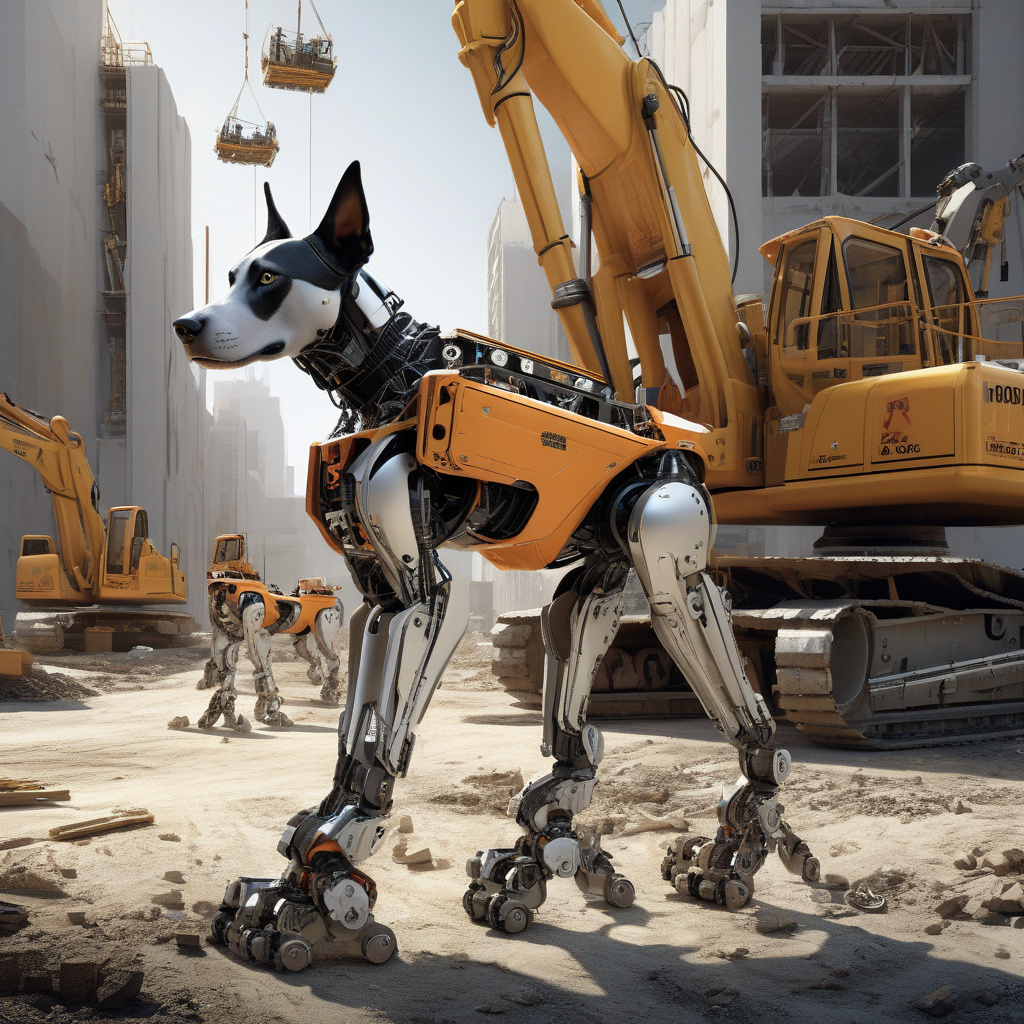Robodog on Patrol at Long Island Construction Site
In an era where technology is reshaping industries, the integration of robotics in construction is rapidly gaining traction. A prime example of this innovation is Robodog, a four-legged robotic assistant currently patrolling a construction site in Long Island. This development not only highlights advancements in automation but also addresses pressing safety and efficiency concerns in the construction sector.
Robodog is engineered to perform various tasks, primarily focusing on security and surveillance. Equipped with advanced sensors and cameras, this robotic canine patrols the perimeter of the construction site, ensuring that no unauthorized individuals gain access. This is particularly relevant in an industry where theft and vandalism can lead to significant financial losses. According to the National Association of Home Builders, theft and vandalism account for approximately $1 billion in losses annually across the United States construction sector. By deploying Robodog, construction firms can mitigate these risks and enhance site security.
One of the most compelling features of Robodog is its ability to operate autonomously. It utilizes artificial intelligence to navigate its environment, recognizing obstacles and adapting to changing conditions. This level of adaptability is crucial in a construction site, where the landscape can frequently change due to ongoing work. With Robodog on patrol, site managers can have peace of mind knowing that a reliable security presence is consistently active, allowing human workers to focus on their jobs without the distraction of monitoring the perimeter.
Furthermore, Robodog serves a dual purpose beyond security. The robot is also capable of conducting inspections and monitoring construction progress. By leveraging high-resolution cameras and thermal imaging technology, it can identify potential safety hazards or irregularities in construction work. This proactive approach not only enhances safety but also ensures that projects remain on schedule. Delays caused by safety violations or construction errors can be costly, and Robodog’s capabilities can help prevent such setbacks.
The introduction of Robodog at the Long Island construction site is not an isolated case; it reflects a broader trend in the industry. More construction companies are recognizing the value of robotics and automation. For instance, in recent years, other organizations have adopted drones for aerial site inspections, further emphasizing the shift towards technology-driven solutions. According to a report by Research and Markets, the construction robotics market is expected to grow significantly, with an estimated value reaching $226 million by 2025.
Cost efficiency is another significant advantage brought about by robotic technology in construction. Although the initial investment in robotic systems can be substantial, the long-term savings often outweigh these costs. By reducing labor needs for certain repetitive tasks, companies can allocate resources more effectively. In addition, robots like Robodog can work around the clock without breaks, increasing productivity and enabling projects to be completed faster.
Despite the many advantages, the implementation of robots in construction is not without challenges. There are concerns regarding job displacement, as workers may fear that technological advancements could replace human roles. However, industry experts argue that robots should be viewed as complementary tools rather than direct replacements. By automating mundane tasks, workers can focus on more complex and rewarding aspects of their jobs. For instance, while Robodog handles security, human workers can engage in skilled trades, design, and project management.
Moreover, the integration of Robodog into the workforce requires a shift in training for employees. Workers must adapt to collaborating with robots and learn how to operate and maintain these new technologies. This shift highlights the importance of continuous education and training programs within the construction industry, ensuring that the workforce remains skilled and competitive in a technology-driven environment.
As Robodog continues its patrols at the Long Island site, it symbolizes a significant step forward in construction technology. The benefits of enhanced security, increased efficiency, and improved safety standards cannot be understated. Companies that adopt such innovations are likely to gain a competitive edge in a rapidly changing market.
In conclusion, the introduction of Robodog at construction sites exemplifies the intersection of technology and practicality in the construction industry. As automation continues to advance, companies must consider how these tools can be effectively integrated into their operations. The future of construction may well depend on the collaboration between human workers and robotic systems, paving the way for a more secure, efficient, and productive industry.
#Robotics #ConstructionInnovation #Automation #ConstructionSafety #TechInConstruction
